Volume 8, Issue 1
Displaying 1-16 of 16 articles from this issue
- |<
- <
- 1
- >
- >|
-
2022Volume 8Issue 1 Pages 1
Published: October 31, 2022
Released on J-STAGE: November 19, 2022
Download PDF (142K) -
2022Volume 8Issue 1 Pages 3-10
Published: October 31, 2022
Released on J-STAGE: November 19, 2022
Download PDF (1658K) -
2022Volume 8Issue 1 Pages 11-18
Published: October 31, 2022
Released on J-STAGE: November 19, 2022
Download PDF (1016K) -
2022Volume 8Issue 1 Pages 19-25
Published: October 31, 2022
Released on J-STAGE: November 19, 2022
Download PDF (1068K) -
2022Volume 8Issue 1 Pages 27-31
Published: October 31, 2022
Released on J-STAGE: November 19, 2022
Download PDF (340K) -
2022Volume 8Issue 1 Pages 33-41
Published: October 31, 2022
Released on J-STAGE: November 19, 2022
Download PDF (864K)
-
2022Volume 8Issue 1 Pages 43-47
Published: October 31, 2022
Released on J-STAGE: November 19, 2022
Download PDF (416K) -
2022Volume 8Issue 1 Pages 49-56
Published: October 31, 2022
Released on J-STAGE: November 19, 2022
Download PDF (1122K) -
2022Volume 8Issue 1 Pages 57-64
Published: October 31, 2022
Released on J-STAGE: November 19, 2022
Download PDF (906K) -
2022Volume 8Issue 1 Pages 65-71
Published: October 31, 2022
Released on J-STAGE: November 19, 2022
Download PDF (1002K) -
2022Volume 8Issue 1 Pages 73-81
Published: October 31, 2022
Released on J-STAGE: November 19, 2022
Download PDF (1590K) -
2022Volume 8Issue 1 Pages 83-93
Published: October 31, 2022
Released on J-STAGE: November 19, 2022
Download PDF (1863K)
-
2022Volume 8Issue 1 Pages 95-101
Published: October 31, 2022
Released on J-STAGE: November 19, 2022
Download PDF (794K)
-
2022Volume 8Issue 1 Pages 103-109
Published: October 31, 2022
Released on J-STAGE: November 19, 2022
Download PDF (922K) -
2022Volume 8Issue 1 Pages 111-116
Published: October 31, 2022
Released on J-STAGE: November 19, 2022
Download PDF (695K) -
2022Volume 8Issue 1 Pages 117-123
Published: October 31, 2022
Released on J-STAGE: November 19, 2022
Download PDF (970K)
- |<
- <
- 1
- >
- >|
